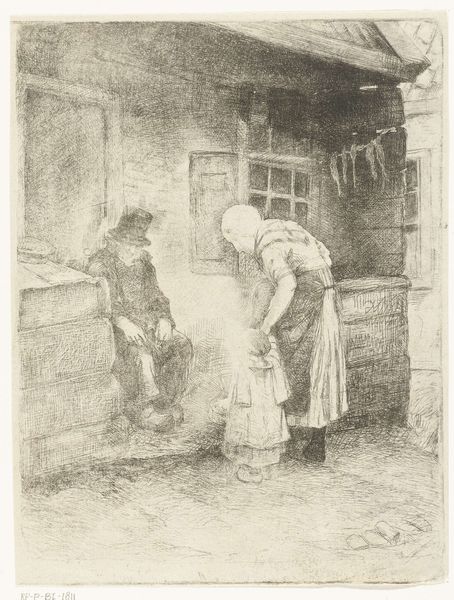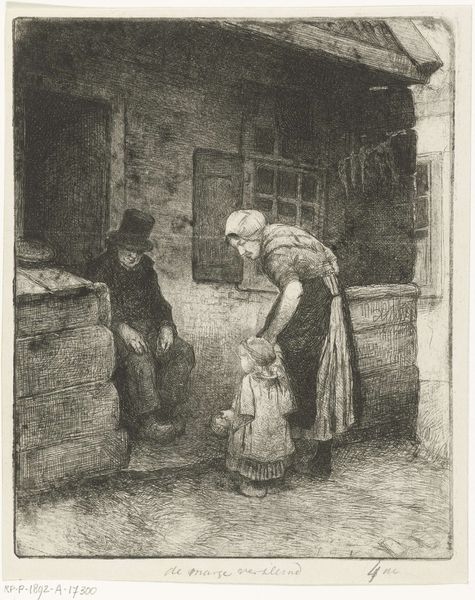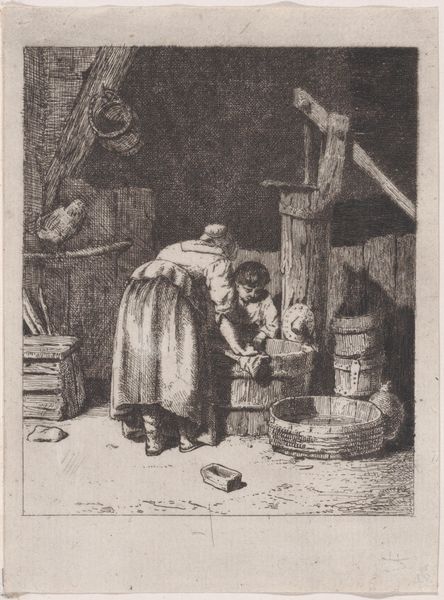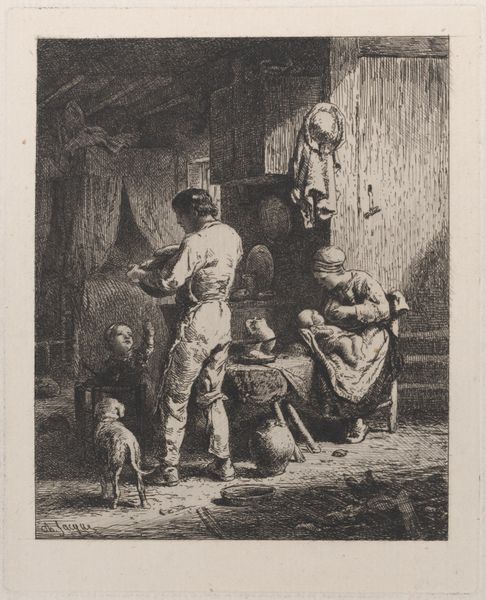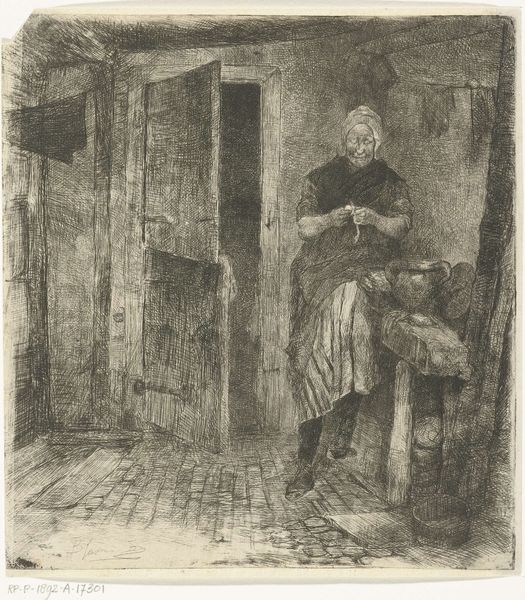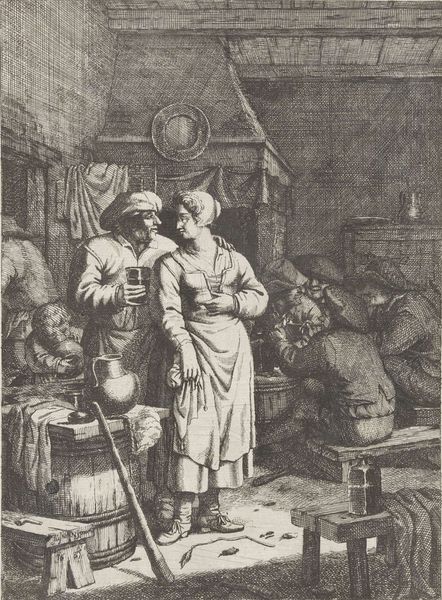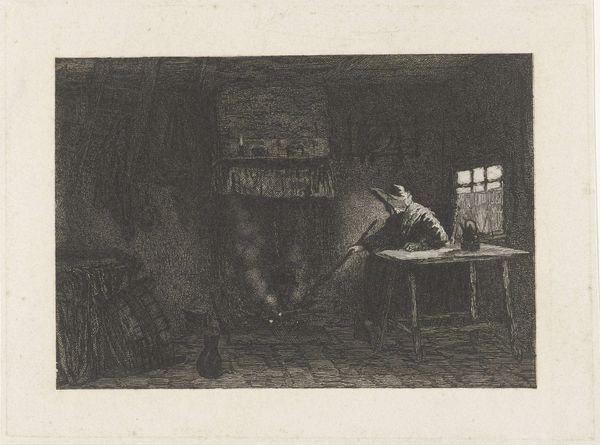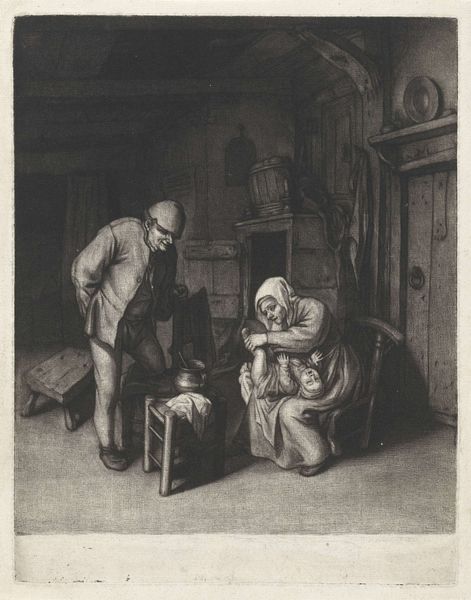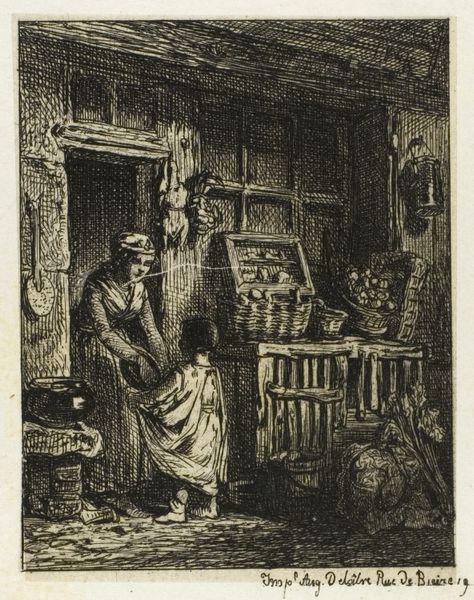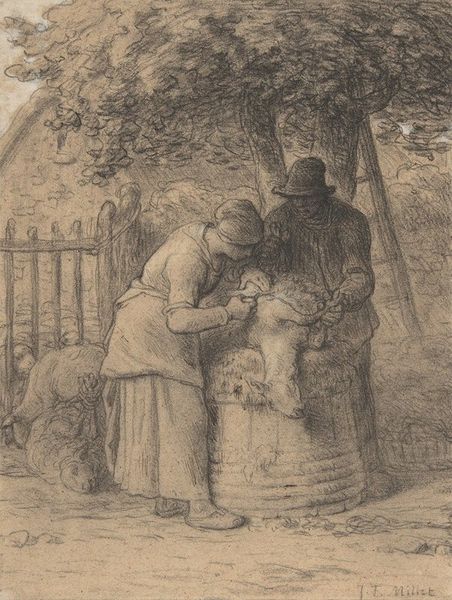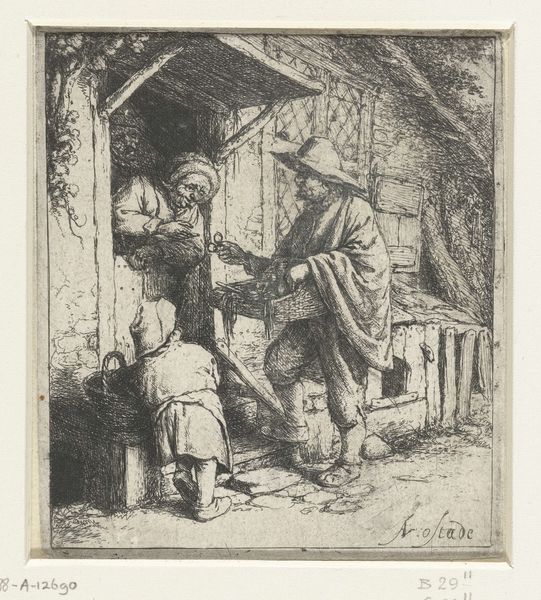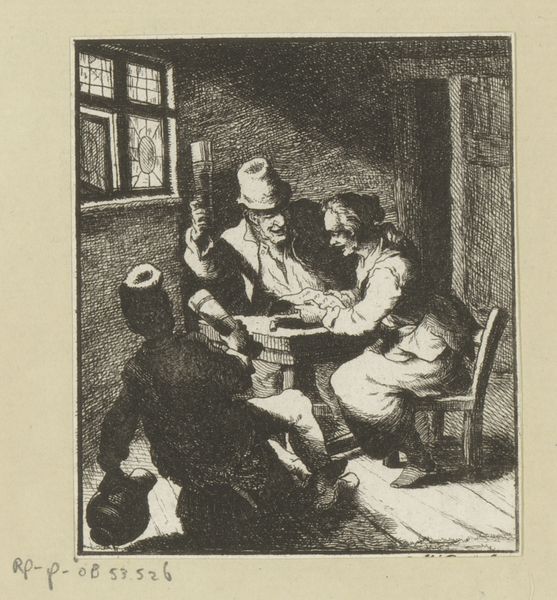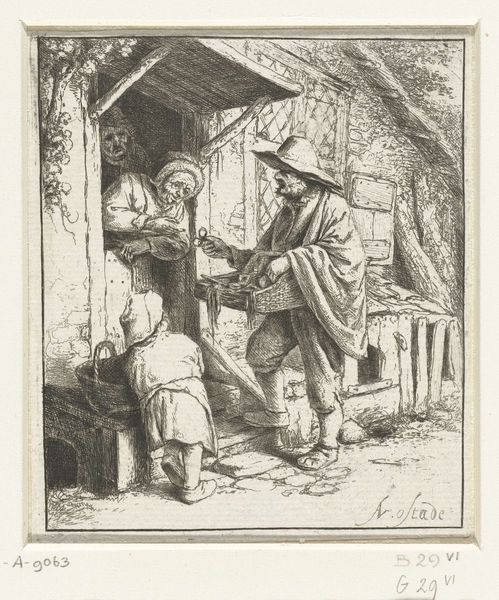
Vrouw met klein kind staat bij zittende oude man voor arbeiderswoning 1855 - 1892
0:00
0:00
drawing, pencil
#
pencil drawn
#
drawing
#
pencil sketch
#
landscape
#
charcoal drawing
#
pencil drawing
#
pen-ink sketch
#
pencil
#
sketchbook drawing
#
genre-painting
#
realism
Dimensions: height 201 mm, width 165 mm
Copyright: Rijks Museum: Open Domain
Editor: This drawing, "Vrouw met klein kind staat bij zittende oude man voor arbeiderswoning," dating from 1855-1892 by Bernardus Johannes Blommers, is rendered in pencil. It’s quite affecting, depicting what looks like a scene of domesticity and poverty. What do you see when you look at this work? Curator: I see the labor implied in every line. Note the starkness of the pencil, its inherent cheapness compared to oils, reflecting the subjects' likely economic status. The medium itself speaks to a world of limited resources. How does Blommers’ choice to use drawing influence the artwork's social meaning for you? Editor: I suppose it makes the scene more immediate and less idealized than if it were a painting. The rawness is almost journalistic. The dwelling also appears rather temporary, doesn't it? Curator: Precisely. This pencil wasn't created in a vacuum; it’s a product of industrialization, accessible to more artists who want to depict these scenes. We should ask how its availability democratized artmaking, shifting focus toward everyday labor and the plight of the working class, which Blommers depicts with notable social awareness. Consider the labor of the artist as well, making choices about which materials will portray the social setting of the laboring family. What effect does this focus have? Editor: It really grounds the image. Knowing the artist likely considered the implications of his chosen materials provides another layer to interpreting this scene. It feels much more intentional. Curator: Exactly. It challenges any sentimental reading of the scene. The very means of production of the artwork highlights social inequalities, making it a powerful, albeit understated, statement. It brings an immediacy, and a critical eye towards artistic intention. Editor: I see that now. I’ll never look at a "simple" drawing the same way again. Curator: Wonderful! The materials can indeed reshape how we perceive a work, shifting our gaze from subject to the very infrastructure that holds the image.
Comments
No comments
Be the first to comment and join the conversation on the ultimate creative platform.
